Corcovado National Park among the top 10
The Corcovado National Park was created in 1975. And it is on the list of the 10 best National Parks in the world, in terms of biodiversity.
According to National Geographic, this park is one of the greatest in the world, from a biological point of view. The biodiversity of this place is impressive. In fact, it is said that there is no other place on earth with a similar size.
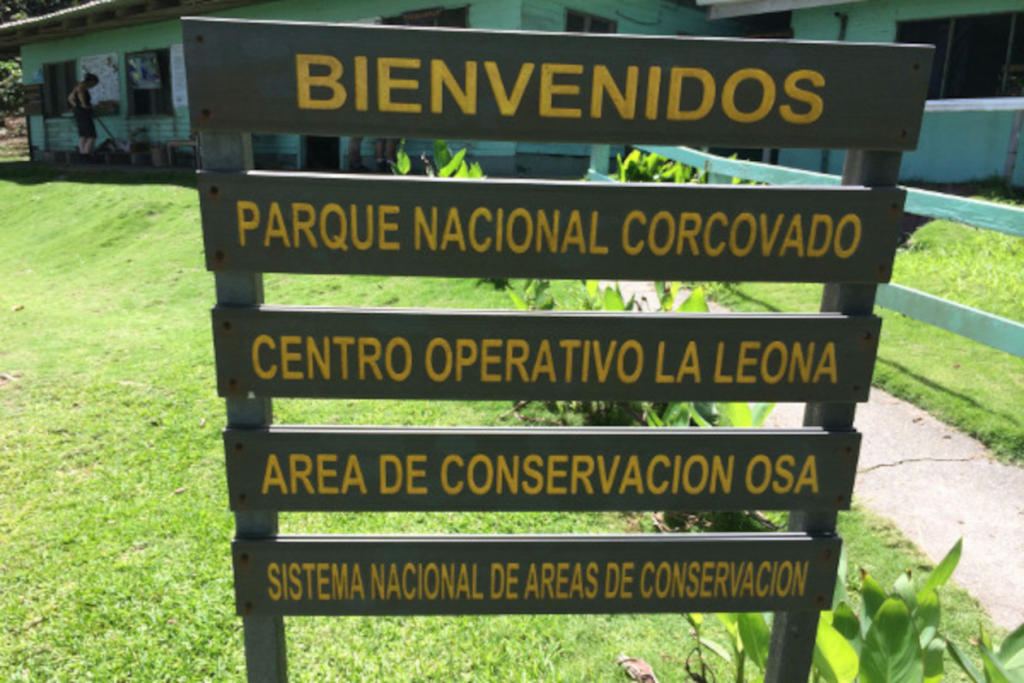
Where is Corcovado National Park located?
Corcovado National Park is located on the Osa Peninsula, in southwestern Costa Rica.
It is about 350 kilometers from San José, the Costa Rican capital. Located in a site of unquestionable beauty.
The virgin forest captures visitors as it surrounds them with its colorful nature. This place is one of the top attractions for nature lovers.
Costa Rica is famous for its protection of the environment and has captured the world’s attention in recent years. We can say that the Corcovado National Park is responsible for this. With the “Best National Park” rating published in “Discover Corps” in September 2016, this park finally gets the admiration it deserves.
Corcovado, a Nature Reserve
A landscape of forests, large stretches of uninhabited beaches and resounding waterfalls make Corcovado a natural reserve of undeniable beauty. The park is located in the biological corridor of flora and fauna of Central America. This corridor connects the north with the south of the continent. The climate with a high intensity of rains allows the creation of lagoons and rivers. The park also encompasses a large number of waterfalls and cascades, particularly a 35m waterfall that falls directly into the sea. It is for this and much more that the Corcovados National Park cannot be missing from your list of places to visit.
Riches of its fauna and flora
Corcovado covers the largest extension of humid tropical forest in America. Its rich habitats are home to 500 species of trees, 367 species of birds, 140 species of mammals, 117 species of amphibians and 40 species of freshwater fish. The Park is also home to a number of flora and fauna that is in danger of extinction.
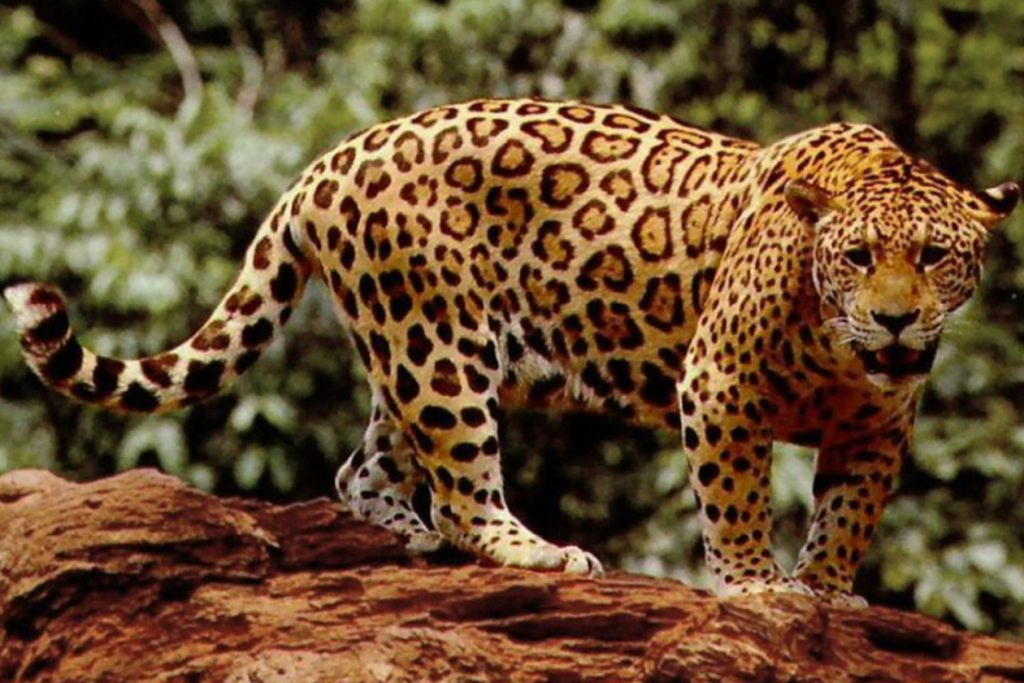
What are the Park’s opening hours?
The Park is open to the public from Monday to Sunday, from seven in the morning until four in the afternoon.
What activities can be done in the Corcovado National Park?
- Corcovado is a place where you can go to watch whales and dolphins.
- You can observe birds of a large number of species
- You can practice diving
- Surf
- It is possible to do sport fishing
- Kayak
- Swimming
- You can run or walk on the beach
- You can go hiking
- Etc.
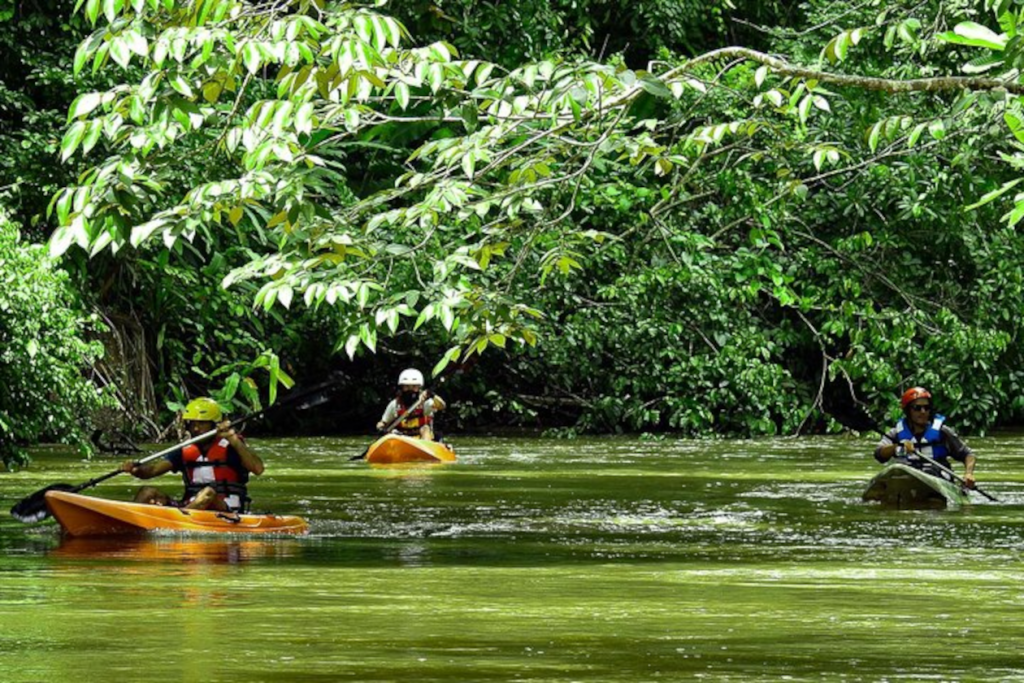
From where do the tours start?
A one day tour to Corcovado National Park meets at 7 am at Uvita dive shop and returns between 3:00-4:00 pm. Includes national park fees, professional guide, lunch and a great time.
See more information here: Corcovado Tour Information
Area distribution
The park is divided into six different sectors, which are La Leona, Sirena, San Pedrillo, Los Patos, Los Planes and El Tigre.
Each of them has trails for hiking and being able to observe nature at its best.
Sirena Area
The Sirena sector is located in the very center of Corcovado. It is possible to reach the Sirena sector on foot or by boat, if your starting point is Drake.
That is where the Sirena ranger station is located. It is the only place in Corcovado where you can spend the night, except for some official camping places, where it is possible to camp if you reserve beforehand.
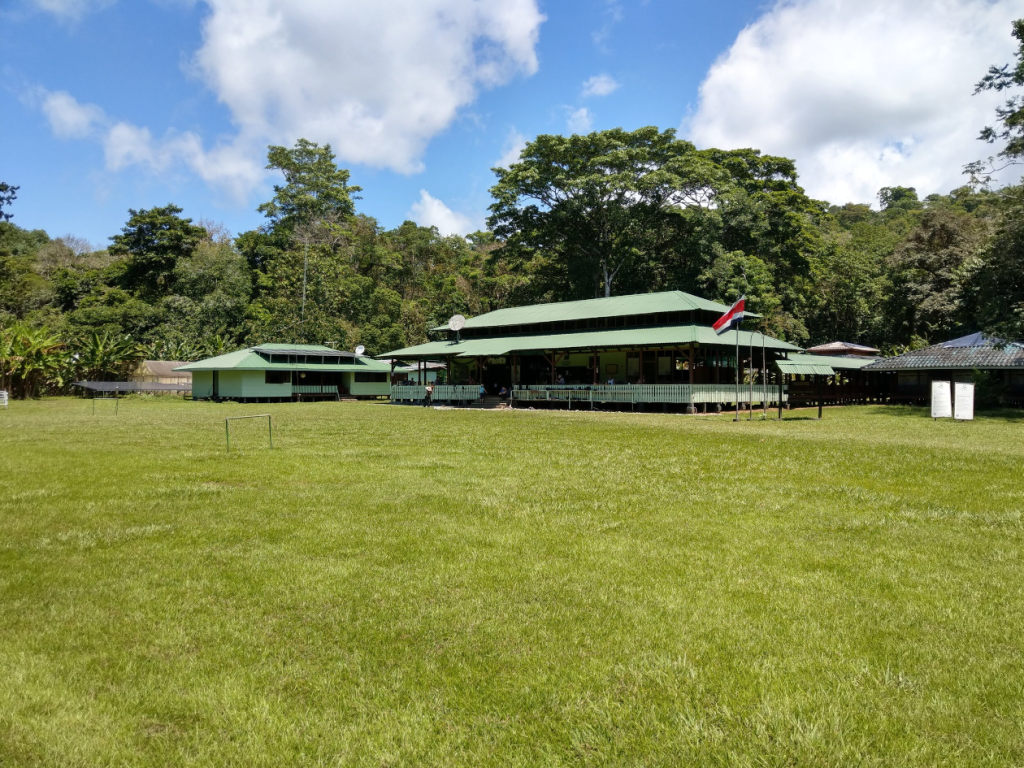
La Leona Area
The La Leona Sector is located on the south coast. The first thing is to get to Carate and it can be done via land transport.
We recommend using a private transportation service from Puerto Jiménez. This is because of the many rivers you will have to cross.
You will have to walk approximately forty-five minutes along the beach until you reach the entrance. The ideal is to stay there in a tent camp, or otherwise you will have to walk between six or seven hours until you can reach the Sirena station.
San Pedrillo Area
The closest town to this area is Drake, a place that you can access by car or plane.
The San Pedrillo Sector can be accessed by boat. The longest route in that area will take you to a beautiful waterfall.
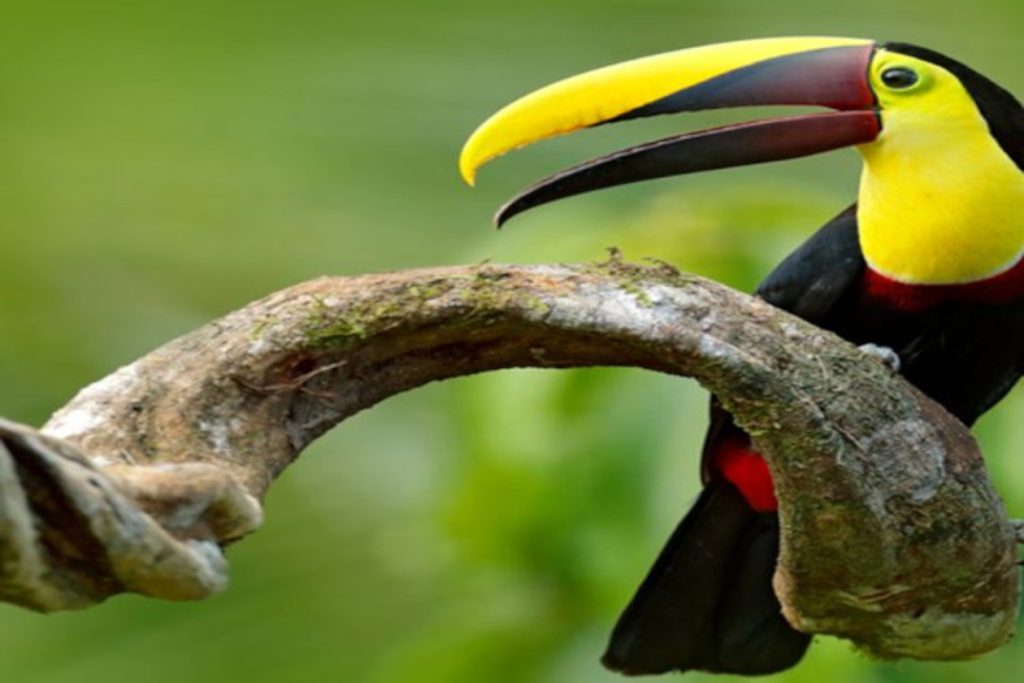
Los Patos Area
To the north of Puerto Jiménez is the Los Patos sector. It consists of trails and also a river that you must cross more than a couple of times until you reach the Sirena station. The journey adds between eight to nine hours of walking.
Los Planes Area
Access to the Los Planes sector is difficult, although transit in the area is not so difficult, since it is only approximately 4 km long and is quite flat.
El Tigre Area
This is the newest entrance to the Park. The path inside is circular and is approximately seven kilometers long.
The path is a difficult section and is recommended only for experienced hikers.
The trail within this area of the park begins and also ends in a town called “Dos Brazos de Río Tigre”.
Formerly it was an area where gold was extracted. Thanks to the efforts of the entities that promote tourism, this practice no longer characterizes the area.
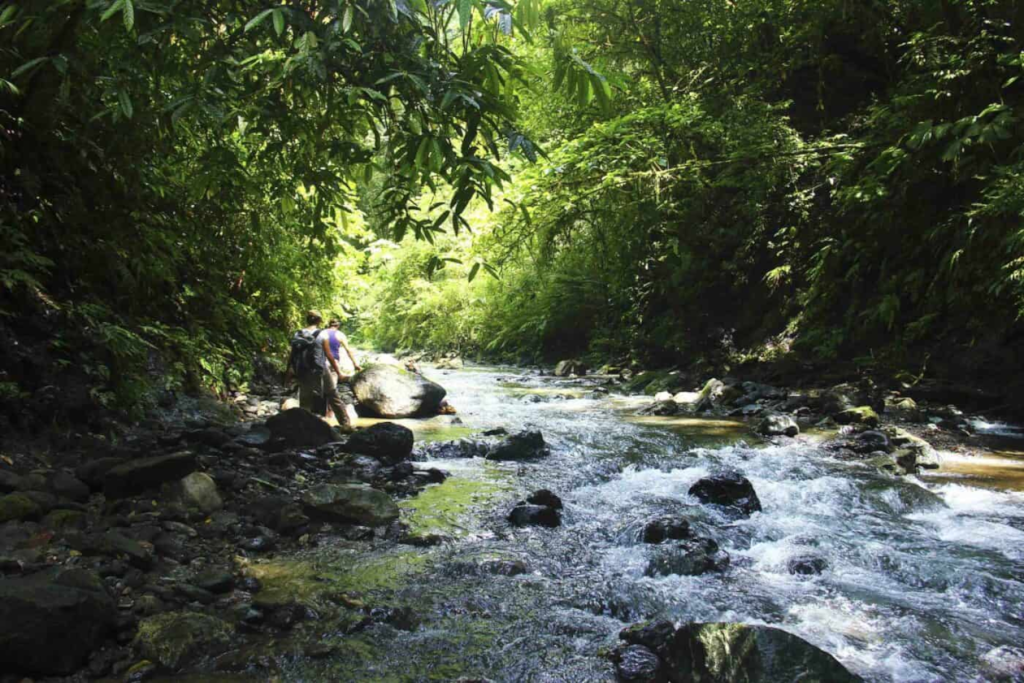
How is the weather in Corcovado?
We can summarize the weather in Corcovado as hot, rainy and extremely humid.
The best time to visit the park is during the dry season, which runs from mid-December to mid-April. During this time sporadic rains are recorded in the area.
The months from October to November are the months that recorded torrential rains. One of the sectors of the park called La Sirena, remains closed during the month of October, time in which arrangements are made in the facilities and in the circuits of the park.
Isolated rainfall is occasionally recorded in July and August. From May to September the weather is usually very pleasant.
You must enter with an authorized guide
By a provision of the government of Costa Rica, if you are a visitor to the Park you must enter with a companion who is an official guide of the place, who is knowledgeable about the paths and the species. To prevent any tourist from getting lost on the trails.
A good recommendation is not to stray too far from the trails when spotting the animals.
Protect endangered species
With lush landscapes and mountains, Corcovado National Park plays a vital role in protecting some of these endangered species. Some of these animals can almost only be seen in this park.
Because of this, if you visit this park you will have the opportunity to see at least 5 of these unique animals that are in danger of extinction. Some of them are the Tapirs, Jaguars, American Crocodiles, Giant Anteaters and Hapian Eagles, the American Crocodile and a large amount of flora.
The biodiversity of the Corcovado National Park will also allow you to see, if you are lucky enough, a combination of exotic animals in the same place.
Are there records of animal attacks on humans in the Corcovado National Park?
There are no records of animal attacks on humans. However, it is important to remember that Corcovado is a Protected National Park. Ecosystems remain intact and animals are free within the perimeter of the park. This is why it is important to stay in designated tourist areas and not leave the trails.
For example, Corcovado has a sizeable population of endangered peccaries, which travel in large family groups of up to 30 members. They rarely attack humans, but as they have limited vision it is important to avoid their path.
Corcovado is also the place where you can go whale and dolphin watching. Also bird watching, diving, sport fishing, surfing, swimming, running on the beach or taking a walk at sunset.
To visit the Corcovado National Park it is mandatory to hire the services of a guide, since it is not allowed to visit it on your own. There are many excursions and packages, which include transportation to the entrance of the Corcovado National Park. Your best starting point will be the town of Puerto Jiménez.
You will have to walk for hours, it will rain like never before, you will cross rivers where there are crocodiles, you will be bitten by insects that you did not even know and you will be surrounded by a nature that seems to want to devour you at every moment, but even so, or precisely for that reason, it will be worth
It may interest you: Encounter with pumas in Corcovado National Park, Costa Rica
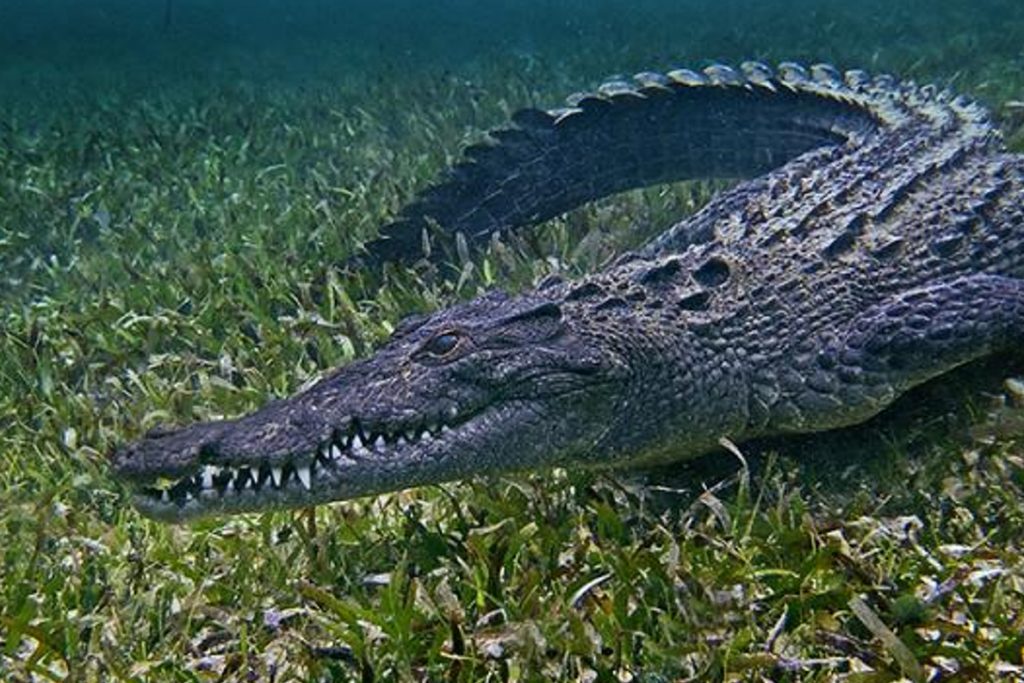
Some species that you can see in the Corcovado National Park
Snakes
In Costa Rica there are numerous poisonous snakes and some of them are undoubtedly deadly. In Corcovado it will not be difficult for you to find one of the most popular: velvet. It is relatively easy to see some while walking through the forest, so you should exercise extreme caution. Velvet is one of the reasons why walking at night is prohibited in Corcovado.
Jaguar
Being lucky enough to meet a jaguar is as likely as winning the lottery, but the fact of being in Corcovado already makes you a participant with many ballots in your pocket. Jaguars are elusive and nearly impossible to see, so you really must be pretty good at gambling if you come across one. It is the largest carnivore in Central America and is in danger of extinction. Running into one takes anyone’s breath away.
Tapir
In Corcovado it is possible to see tapirs. The tapir, or tapir in Costa Rica, is a distant cousin of the rhinoceros and a population of between 250 and 300 individuals is estimated in the Park. They are nocturnal animals and at dawn it is possible to find their tracks along the roads and beaches. Following them, with great stealth and respect, you may find some fleeing the heat of the day crouched under the undergrowth. Although they are herbivores, they can be up to a meter tall and weigh about 300 kilos. It is the largest mammal in Central America, so you have to be careful and keep your distance.
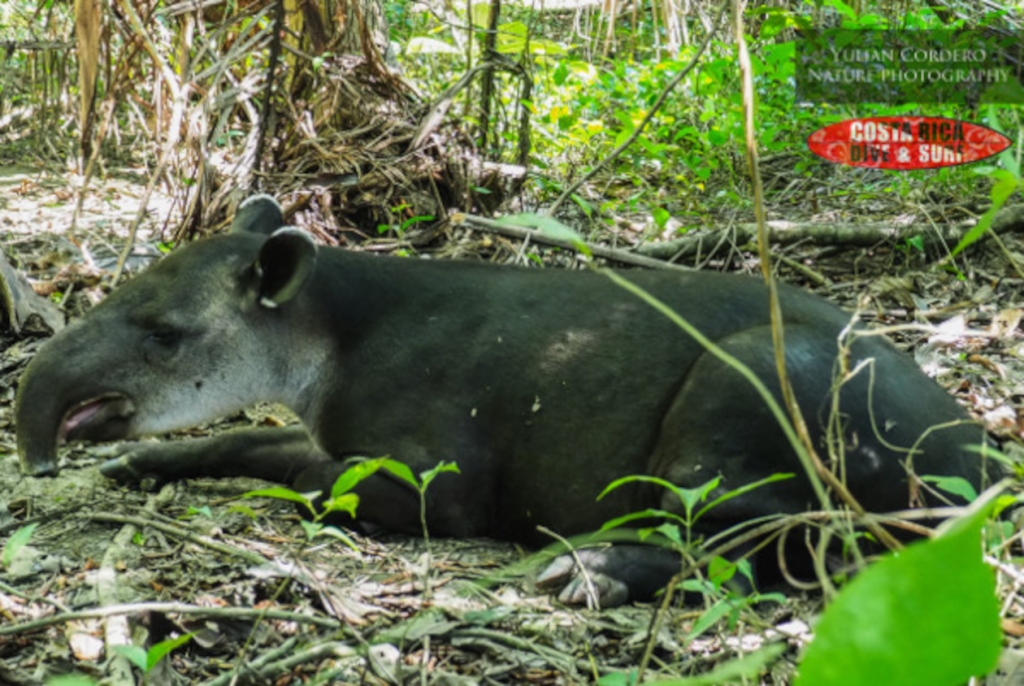
Cougar
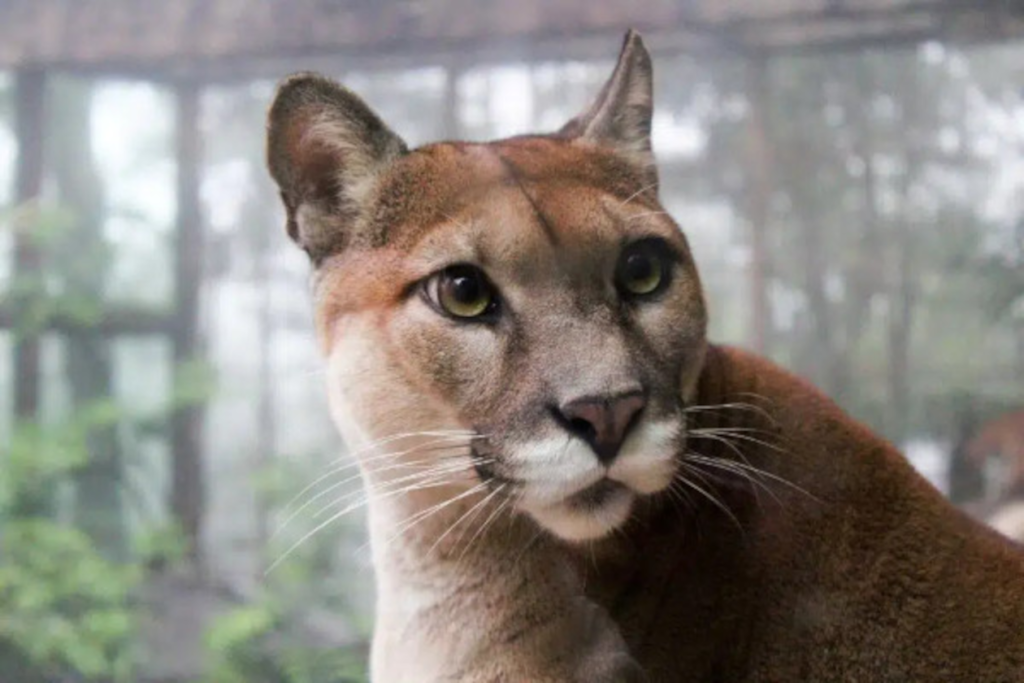
Pumas are easier to see than jaguars, but running into one requires patience and, above all, infinite luck. But yes, Corcovado is one of the best places in the world to enjoy them in their natural environment. You may find his footprints and follow his trail, see his footsteps go from the jungle to the beach and from the beach to the jungle. Pay attention, keep looking and listen carefully, the monkeys can become their prey and when this happens the alarm cries of the apes can alert you to where the action is.
Crocodiles
Corcovado is like living inside a National Geographic documentary and if you have a fondness for them, it may sound like an incredible scene that you may never witness again. As the tide rises, the level of the Sirena River rises, the waters mix and stir completely.
At that moment the crocodiles that inhabit the river go out to sea and the bull sharks enter the river, crossing each other at the mouth. Food moves them and if you are lucky enough to witness it, it will be something you will never forget.
Monkeys
In the Corcovado National Park you can easily see four species of monkeys: spider monkeys, capuchins or white-faced monkeys, marmosets and howler monkeys.
But hearing, even a few miles away, will be only the latter.
They do not have that name by chance, the howlers emit howls to mark their territory and it is impossible not to hear them at some point, especially when it rains, which is when they are most disturbed. By the way, if they feel threatened, they may throw their droppings at you.
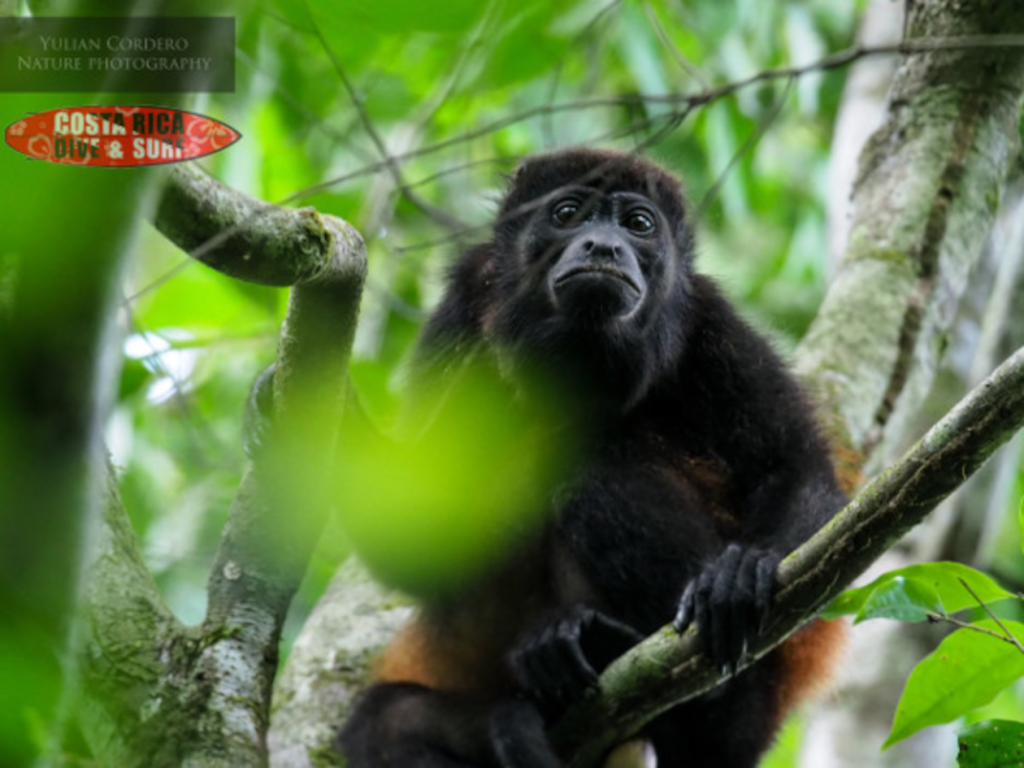
The red eyed frog
When traveling through Costa Rica you will see all kinds of souvenirs inspired by this little frog and that is, if the Costa Rican country has a symbol, that is undoubtedly the red-eyed frog. A bright green amphibian, with hints of blue and orange feet, with long legs and huge red eyes. The Pantyhose Frog is spectacularly beautiful and it is not difficult to see it both in Corcovado and in many other places in Costa Rica. Of course, the best time to find it attached to the leaves of the plants is in the dark of the night.
Macaws
The red macaws, or scarlet macaws, are without a doubt one of the most spectacular birds that hide in the jungles of Costa Rica. They are large, majestic, colorful and easily identifiable by their song. They always fly high and prefer the tops of the highest trees, but you will only need a little luck to see them cross the sky from side to side. In addition, they always go in pairs.
Among the limpets the pairing is for life and they love to turn purple to almonds in the largest almond trees.
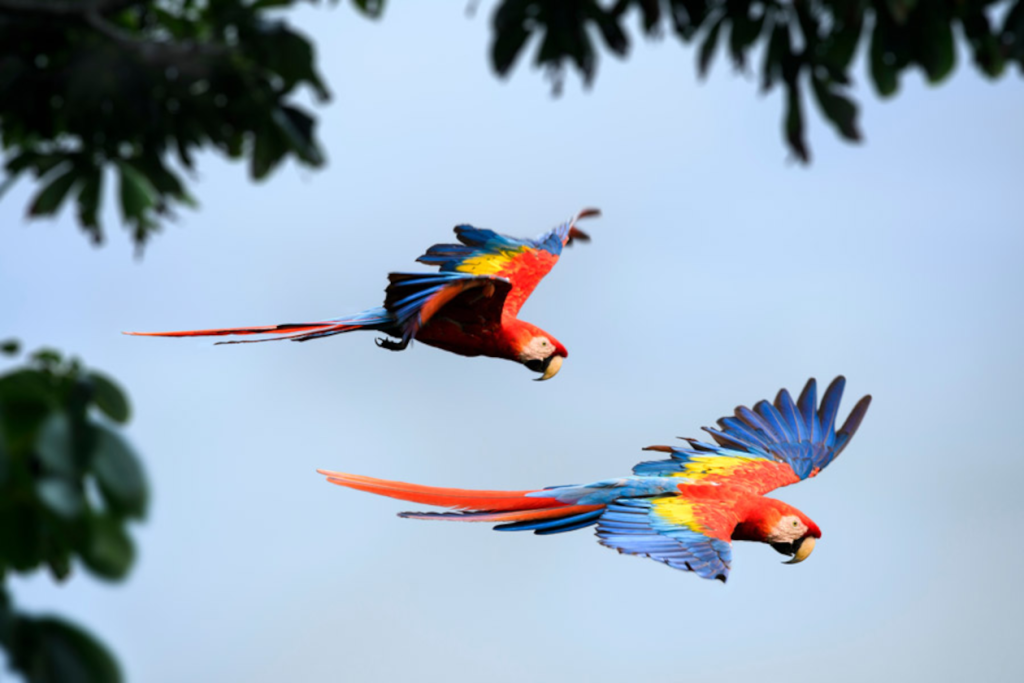
The turtles
The beaches of the Corcovado National Park are frequented by four species of sea turtles, olive ridleys or olive ridleys and green ones are the most common, but you can also find hawksbills or even spectacular leatherbacks.
The turtles spawn at night, so in Corcovado, as it is not allowed to leave the shelters at that time, it is difficult to find them nesting. However, the hatchlings are born in broad daylight and at that time they leave the nest.
That moment, when the little turtles run down the beach to the sea, it is impossible not to consider it one of the unique experiences that can be lived in the Corcovado National Park of Costa Rica.
And it is considered a natural laboratory, ideal for studying tropical ecosystems and the relationships between them.
Above all, safety
The animals found in the area are completely wild. That is why we recommend for your safety and that of the animal to keep a safe distance, observe them for a moment and let the animal continue its activity, this to avoid any disturbance or attack.
What type of clothes should you wear?
Wear comfortable and appropriate clothing, preferably light-colored long pants, long-sleeved shirts, t-shirts that are made of cool and easy-drying fabrics, ponchos or capes, mountain shoes or rubber boots, and other types of shoes such as sandals for resting. .
What else should I bring on hikes?
Remember to bring a bottle of water, and refill them at the stations, snacks (cookies, sandwiches, fruits, whatever you want), a personal first aid kit with what you need (band-aids, medicines, gauze), sunscreen, sunglasses, backpack do not carry briefcases or suitcases.
Remember not to carry a very loaded backpack, carry only what you need!
If you would like to see any of these animals, which is not the privilege of many people, you can join one of our Corcovado National Park tours organized by Costa Rica Dive and Surf.
We’ll make sure you get the best out of this once-in-a-lifetime experience. Contact us today!
Corcovado National Park: A Key Player in the Osa Conservation Area
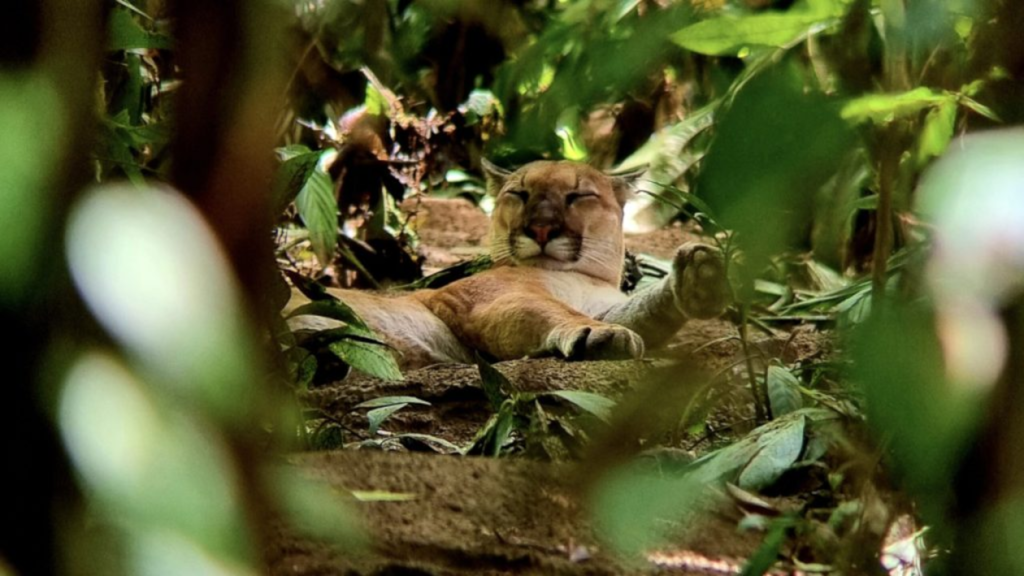
Corcovado National Park is not just a gem of biodiversity but also a crucial piece of the Osa Conservation Area. This larger protected region surrounds Corcovado, helping to safeguard a wide variety of ecosystems in southwestern Costa Rica.
Being part of this extensive conservation network means that Corcovado benefits from robust protection measures, which are essential for preserving its unique wildlife and lush landscapes. By including Corcovado in the Osa Conservation Area, efforts to maintain the balance of nature and promote sustainable practices in this region are greatly enhanced.
A Living Laboratory of Tropical Wonders
Often dubbed the “most biologically intense” place on Earth, Corcovado National Park is like a living laboratory for tropical ecosystems. Its diverse habitats—ranging from dense rainforests to intricate wetlands—provide a golden opportunity for scientists to study how different species interact and thrive.
This special role of Corcovado makes it a treasure trove for researchers, and it’s not just the usual suspects. You might spot incredible creatures like the harpy eagle or unique lizards, all playing their part in this vibrant ecosystem. Corcovado’s status as a “living laboratory” highlights its importance not only in conservation but also in advancing our understanding of tropical environments.
Wildlife Highlights and Conservation Focus
When you visit Corcovado, you’ll encounter some truly remarkable wildlife. Picture the majestic harpy eagle soaring through the canopy or crocodiles lounging by the riverbanks. These are just a few of the incredible species that call Corcovado home.
The park’s commitment to protecting such endangered animals underscores its global importance in conservation. By preserving their habitats, Corcovado plays a vital role in ensuring that these species continue to thrive.
Beyond Corcovado: Discover Caño Island
If Corcovado’s beauty has you yearning for more, why not check out Caño Island? Just off the coast, this island is famous for its vibrant marine life and stunning coral reefs. It offers a wonderful complement to the land-based wonders of Corcovado. Visiting both Corcovado and Caño Island gives you a chance to experience the best of both worlds—lush rainforests and colorful underwater landscapes.
Osa Peninsula Camera Trap Study Reveals Conservation Success and Future Challenges
A groundbreaking camera trap study on Costa Rica’s Osa Peninsula has shown that conservation efforts are paying off, revealing both the positive impacts of protected areas and the challenges that remain. This study, the largest of its kind in Central America, involved placing 240 cameras across the peninsula to monitor wildlife.
The results indicated that areas with robust conservation, like Corcovado National Park, boast a rich diversity of animals, including larger species like jaguars and tapirs. In contrast, regions with more human activity saw fewer species, with larger animals being displaced in favor of smaller, more common ones.
The findings underscore the effectiveness of decades of conservation work but also highlight ongoing threats from human encroachment. Efforts are now focused on creating wildlife corridors to further aid species like jaguars in their recovery and ensure their long-term survival.
This success story reflects a significant stride in conservation, demonstrating that, despite challenges, meaningful progress is possible.
Experience Corcovado National Park
Well, what are you waiting for? At Costa Rica Dive and Surf we organize tours to get to know this fantastic natural place, unique in the world.
In a single day you can have the opportunity to see a good amount of wildlife. Monkeys, hawks, tapirs, pumas are some of the species that live in the park.
Walking the Corcovado trails is an unforgettable experience. In addition, the biodiversity of this place will make you fall in love with it. This summer, plan your next vacation and come with your family!
Costa Rica Dive and Surf will take you to an unforgettable experience in one of the most impressive places in the world!
You can find more information about the tour here.
Dare and book a tour to visit this wonderful place. Send us a message or write to our Whatsapp. We will be delighted to talk with you.
